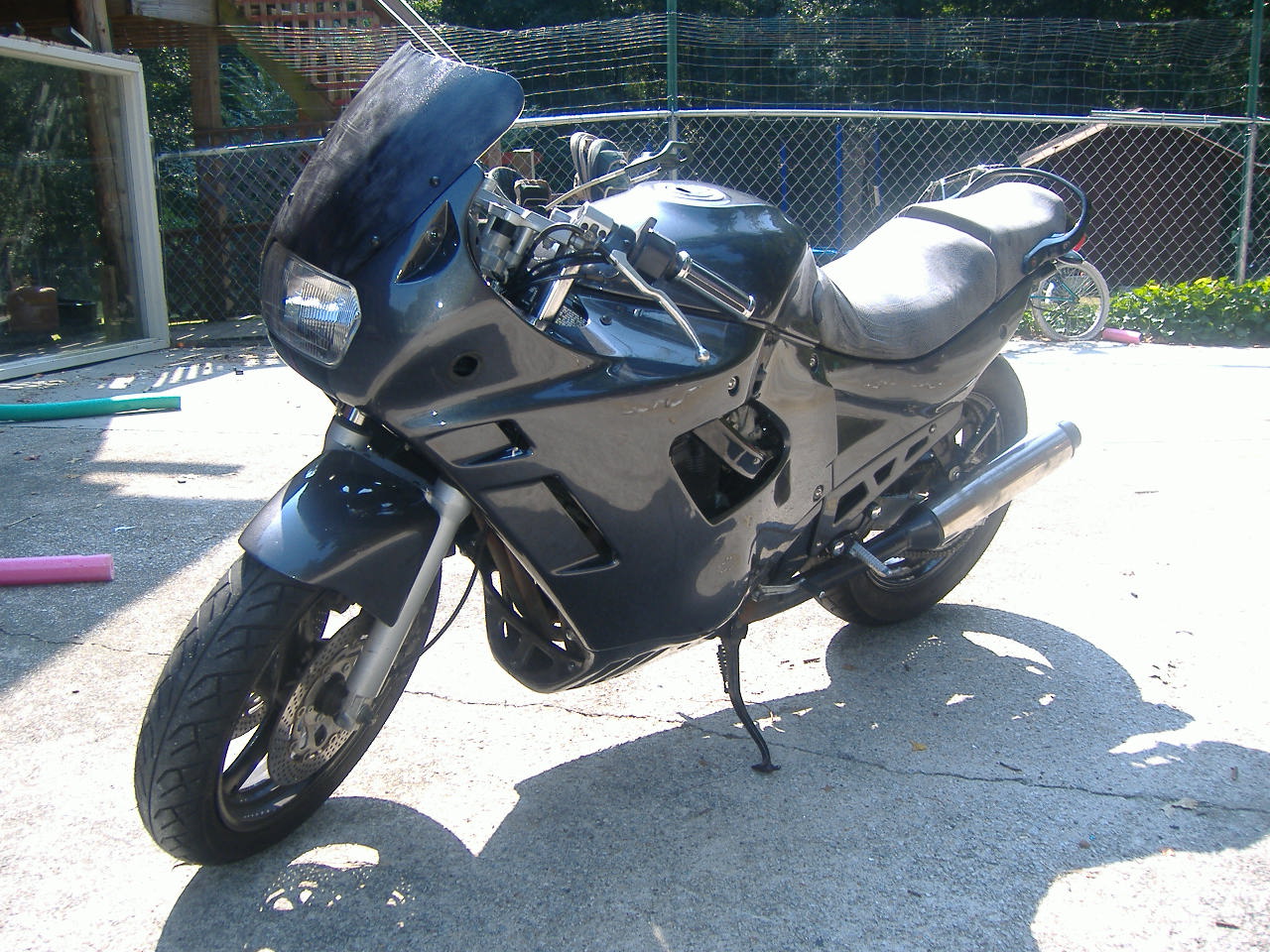

It was available in blue/white, red/white, black combinations.ġ999 Suzuki GSX 600 F The sport touring GSX600F, also known as GSX600F Katana in USA and Canada, was introduced in 1987, at the Paris Bike Show. The bike weighed just 440.92 pounds (200.0 Kg). The GSX600F Katana was fitted with a 5.28 Gallon (20.00 Liters) fuel tank. rebound damping while the rear was equipped with a Link-type suspension, 4-way adjustable rebound damping, 7-way adjustable preload Brakes Front: Dual hydraulic disc. The front suspension was a Telescopic, oil damped, 4-way adj. Stopping was achieved via Dual hydraulic discs in the front and a Single hydraulic disc in the rear. It came with a 120/70-ZR17 front tire and a 150/70-ZR17 rear tire. Power was moderated via the Wet multi-disc, manual.

#92 SUZUKI KATANA 600 MANUAL#
The bike has a 6 Speed, manual transmission. Fuel was supplied via a double overhead cams/twin cam (dohc). A 63.5mm bore x 63.5mm stroke result in a displacement of just 599.0 cubic centimeters. The engine was a air cooled four-stroke, 4-cylinder, 16 valve air/oil cooled with DOHC and TSCC. It could reach a top speed of 129 mph (208 km/h). The Suzuki GSX600F Katana was a four-stroke, 4-cylinder, 16 valve air/oil cooled with DOHC and TSCC Sport touring motorcycle produced by Suzuki between 19. Rear: Link-type suspension, 4-way adjustable rebound damping, 7-way adjustable preload Brakes Front: Dual hydraulic discĤ40.92 pounds (200.0 Kg) ( dry), 208.0 kg ( wet)Ġ.66 liters/100 km (151.5 km/l or 356.40 mpg) dealers much call in to place an order.Four-stroke, 4-cylinder, 16 valve air/oil cooled with DOHC and TSCCįront: Telescopic, oil damped, 4-way adj.
#92 SUZUKI KATANA 600 INSTALL#
If you install Dyĩ3ĝealers Orders Dealer Orders " Dealer Ordersĭynojet Research Inc. This is a common compromise when using stock main jets and needles. You then install #135 mains and you notice the mid-range is great but the top end is slower. After running the bike you notice the top end has improved but the mid-range doesn't pull as well. For example, you have a GSXR1100 G,H with #130 main jets. The dynamic fueling portion of the main jet is the amount of fuel received from the jet in the mid-range potion of the power. The static load is the fuel received through the main jet in the upper gears, where the tachometer is moving very slow. We develop our main jets to correctly serve two functions static load and dynamic load. Correct balancing of the carburetors also ensures a smooth idle. On some models the pilot air jet is changed to provide optimum fuel economy. Idle and off idle is controlled by the mixture screws and the float level which have the most positive effect below 4000 R.P.M. Doing so is proof that you are not using the other circuits correctly. Dynojet has found that the engine will idle with the standard pilot jet, with or without the air-box and with the slides and needles removed from the carburetors therefore we never change the pilot jet. This controls 100% of the engine idle and 25% of the transition onto the needle. Dynojet alters this only to achieve the flattest possible fuel delivery curve. The smaller the main air jet, the more fuel you get and less air. The larger the size of the main air jet, the more air you get and less fuel. It controls the amount of fuel which can be pulled from the float bowl into the venturi. This jet allows air into the emulsion tube to mix with fuel being drawn up from the float bowl. This isolates all circuits from each other and ensures easy set-up of the midrange and driveability. then with the correct end dimensions, the needle will have little effect on the main jet regardless of needle position. The needle is designed to give the correct amount of fuel throughout the mid-range and is also designed to allow adjustment from groove 1 to groove 6 with little or no effect below 3000 R.P.M. The design of the needle is where Dynojet spends most of its R&D time. They also have an effect similar to fuel injection by breaking up the fuel as it enters the air stream.
#92 SUZUKI KATANA 600 FULL#
In order to achieve full function and driveability, Dynojet develops shrouds or cap style nozzles for adjusting the upper or lower top end. You find the need to lean out for low speed and richen up for top end or leaner on the top end and richer at the low speed. When aftermarket pipes are used, the power curve is usually not flat. Many newer bikes have very flat power and fuel delivery curves when used with the stock exhaust and air-box.


 0 kommentar(er)
0 kommentar(er)
